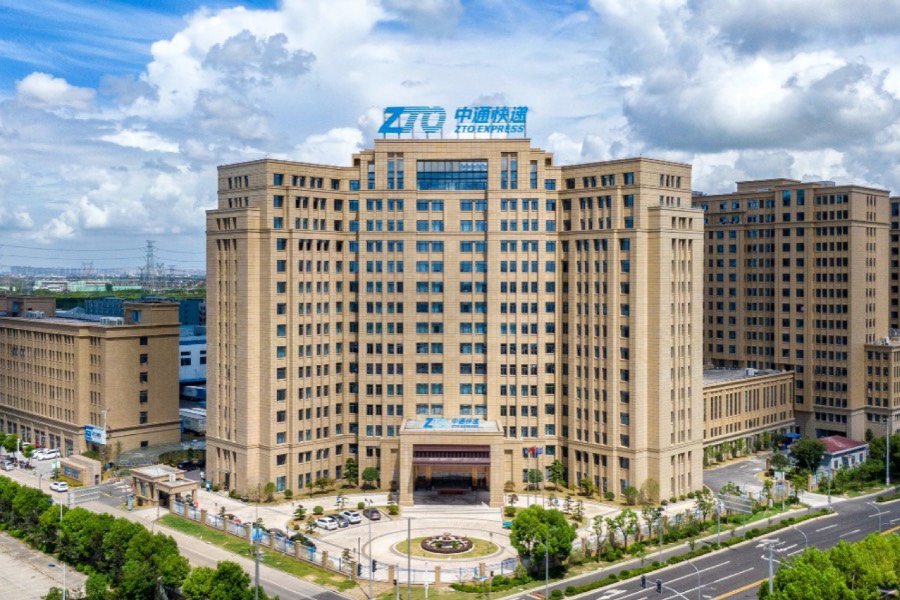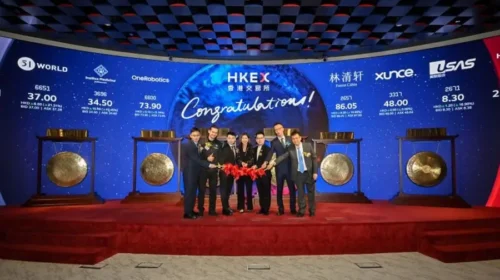ZTO waits for ebb of ‘race to the bottom’ in struggle to balance revenue, profits

The logistics provider’s profit fell in the first half of 2025 as rising costs and falling prices outweighed growing parcel volume
Key Takeaways:
- ZTO’s parcel volume increased 17.7% year-on-year to 19.85 billion pieces in the first half of 2025, as its market share rebounded to 20.8%
- The logistics company’s profit for the six-month period fell 2.6% to 3.93 billion yuan, while its gross margin tumbled from 32% to 24.8%
By Lee Shih Ta
In China, few industries are as embedded in the daily life of consumers as express delivery. Each delivery notification on a person’s smartphone reflects the pulse of China’s vast e-commerce economy and its billions of parcels delivered each month.
But cutthroat competition, known locally as “involution” or a “race to the bottom,” has turned the industry that delivers those goods into a bloodbath. That reality was on stark display in the sinking profits and tumbling margins from the latest financial report issued last week by ZTO Express (Cayman) Inc. (ZTO.US; 2057.HK), one of the industry’s top players.
According to official data, online retail sales in China reached a staggering 7.43 trillion yuan ($1.03 trillion) in the first half of 2025, up 8.5% year-on-year. Online sales of physical goods grew by 6%, keeping e-commerce’s share of total retail sales of consumer goods at around one-quarter. The express delivery industry has been the biggest beneficiary of the e-commerce boom, with parcel volume hitting 95.6 billion in the first half of 2025, up 19.3% year-on-year.
ZTO’s mixed bag of results reflects the many challenges facing its industry. Its revenue rose 10.3% year-on-year to 11.83 billion yuan in the second quarter, but its profit fell 24.8% to 1.97 billion yuan. Trends were similar for the first half of 2025, when ZTO’s revenue rose 9.8% to 22.72 billion yuan, but its profit decreased 2.6% to 3.93 billion yuan. Its gross profit margin for the first half of the year also fell sharply to 24.8% from 32.0% a year earlier.
After losing market share last year as it tried to avoid getting too sucked into its industry’s race to the bottom, ZTO stated a primary mission for 2025 was to “exceed the industry-average growth rate for its parcel volume.” It did just that by handling 19.85 billion parcels in the first half of the year, raising its market share to 20.8% from 19.4% at the end of last year. Its volume growth of 17.7% approached the industry average of 19.3%, but still lagged the 27% growth for J&T (1519.HK), 25.73% for SF Holding (6936.HK; 002352.SZ), and the 21.79% for YTO (6123.HK; 600233.SH).
Small, light parcels bring down prices
While ZTO’s parcel volume growth recovered, its revenue per parcel fell by about 6% year-on-year, eroding its gross margin. The reasons behind the decline were multifaceted. They were partly caused by an ongoing trend of people sending smaller and lighter parcels. A flood of high-frequency, low-priced parcels from platforms like Pinduoduo and Douyin also worked to drive down the average. And ZTO adopted a relatively aggressive pricing strategy to defend its market share.
CFO Yan Huiping pointed out that the company’s core express delivery business averaged a net decrease of 0.06 yuan in revenue per parcel in the second quarter. That was mainly due to a 0.18 yuan increase in volume-based incentives and a 0.05 yuan decrease for each package from smaller average parcel weight. Those factors were partly offset by a 0.17 yuan increase in unit prices for key customers.
On the cost side, ZTO’s scale advantages were offset by rising investments in direct customer services, network upgrades and regional service assurance. The company’s operating costs reached 22.95 billion yuan in the first half of the year, up 18.6% year-on-year. Transportation costs rose 13.1% to 10.37 billion yuan and sorting costs increased 11.2% to 5.74 billion yuan. But other costs, including expenses for expanding direct customer business and network infrastructure investments, surged by 47.6% to 6.84 billion yuan, dragging down the company’s gross margin.
As parcel mixes shift towards growing volumes of lighter and smaller items, express delivery companies need to invest more in building last-mile delivery capacity and differentiated direct customer services. That requires more investment for subsidies and service quality assurance.
As a market leader, ZTO is also increasing investments in regional infrastructure and digital upgrades to maintain its national network and service standards. Such investments depress margins but yield no immediate short-term revenue benefits.
Easing of race to the bottom?
ZTO’s sacrifice-of-profits-for-market-share approach reflects the industry’s intense competition characterized by falling profits and margin erosion. According to calculations based on express delivery volume and revenue data from the State Post Bureau, the average Chinese express parcel price dropped from 28.55 yuan in 2007 to just 7.49 yuan in June 2025.
To ease the situation and make the industry more sustainable, regulators have been trying to tamp down the “race to the bottom.” In mid-August, the city of Yiwu in Zhejiang province took the lead by announcing a price increase, raising the minimum parcel price limit by 0.1 yuan to 1.2 yuan. And starting on Aug. 4, Guangdong province, which accounts for 24% of China’s parcel delivery volume, also raised its base price by 0.4 yuan. The provincial government also stipulated that companies should not accept parcels below the price of 1.4 yuan, or they could face penalties.
Perhaps feeling pressure from its declining profits and margins, ZTO’s management revised down its full-year volume target from 40.8 billion to 42.2 billion parcels, to a lower range of 38.8 billion to 40.1 billion. The revised target still implies a growth rate of 14% to 18%.
ZTO’s stock dipped slightly by 0.71% to HK$154.70 after the latest earnings announcement, but is still up about 3% this year. Its price-to-earnings (P/E) ratio stands at 12.46 times, lower than SF’s 22 times, YTO’s 16.4 times, and Yunda’s (002120.SZ) 14.7 times, reflecting market concerns about ZTO’s profitability. While official measures to tamp down competition are likely to benefit the recovery of parcel prices, time may be needed for substantial effects to materialize. In the longer-term, such measures could benefit the largest players like ZTO, providing some upside for the profits and stocks.
To subscribe to Bamboo Works weekly free newsletter, click here





